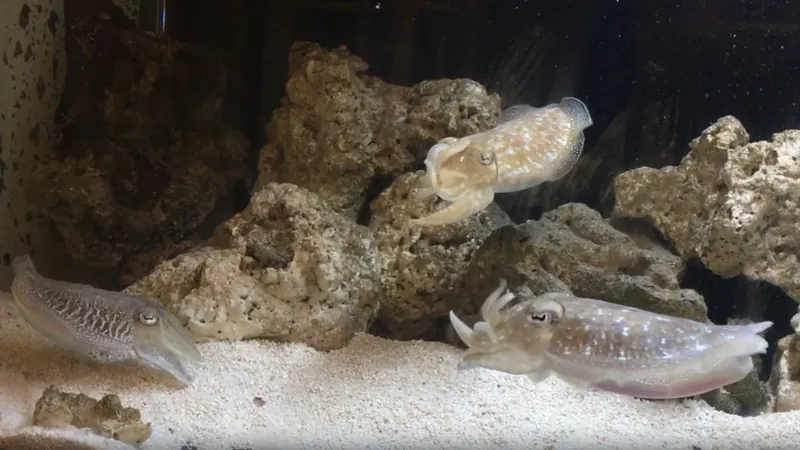
Cuttlefish' Fascinating Arm-Waving: A New Form of Communication?
2025-05-02
Author: Kai
Cuttlefish Communication: A Wave of the Future?
Recent research suggests that cuttlefish might be using their tentacles to engage in a form of communication that resembles waving. This groundbreaking study has raised more questions than answers, leaving scientists pondering the exact messages behind these arm movements.
The Complexity of Cuttlefish Signals
Cuttlefish are renowned for their intricate communication methods, which involve a staggering mix of color changes, body posture adjustments, and even ink release during courtship rituals. Their tentacle movements add another layer to their communication arsenal, particularly evident when males display aggression towards one another.
Unraveling the Mystery of 'Arm Waves'
In this exciting study, researchers observed the common cuttlefish (Sepia officinalis) and the dwarf cuttlefish (Sepia bandensis), noting their consistent and specific arm movements. They identified four distinct "arm wave signs": the "up" sign, "side" sign, "roll" sign, and "crown" sign—each potentially carrying unique meanings.
Cuttlefish Interactions and Possible Vibrational Communication
Footage captured during the study revealed that cuttlefish often responded to videos of their own arm movements, especially when played upright. This suggests that orientation plays a crucial role in how these creatures interpret signals. Even when obstructed from visual contact, cuttlefish performed the wave signals, implying they can also communicate through vibrational waves in the water.
Testing Vibrational Responses
The research team further explored this by using a hydrophone to capture the vibrational traces of the arm movements. Intriguingly, cuttlefish only responded to original vibrational patterns rather than scrambled versions—hinting that the sequence of these vibrations is laden with meaning.
Understanding Behavior: Communication or Reflection?
Yet, defining these behaviors strictly as communication is a complex task. Biologist Trevor Wardill points out that the cuttlefish's reactions—similar to how they might engage with their reflections—could complicate interpretation. He notes that cuttlefish occasionally wave at caretakers, possibly seeking attention or food, reinforcing the idea of communication.
The Future of Cuttlefish Research
The research team believes their findings support the idea that these arm waves serve as communication signals, merging visual and vibrational cues. Future endeavors may include employing machine learning to decode these signals further. There's even talk of creating cuttlefish-like underwater robots to test how real cuttlefish respond to artificial exhibitions of these signals.
In the quest to fully understand cuttlefish communication, Cohen-Bodénès emphasizes that this research opens the door to further analysis, promising a thrilling look into the depths of how these remarkable creatures interact.




 Brasil (PT)
Brasil (PT)
 Canada (EN)
Canada (EN)
 Chile (ES)
Chile (ES)
 Česko (CS)
Česko (CS)
 대한민국 (KO)
대한민국 (KO)
 España (ES)
España (ES)
 France (FR)
France (FR)
 Hong Kong (EN)
Hong Kong (EN)
 Italia (IT)
Italia (IT)
 日本 (JA)
日本 (JA)
 Magyarország (HU)
Magyarország (HU)
 Norge (NO)
Norge (NO)
 Polska (PL)
Polska (PL)
 Schweiz (DE)
Schweiz (DE)
 Singapore (EN)
Singapore (EN)
 Sverige (SV)
Sverige (SV)
 Suomi (FI)
Suomi (FI)
 Türkiye (TR)
Türkiye (TR)
 الإمارات العربية المتحدة (AR)
الإمارات العربية المتحدة (AR)